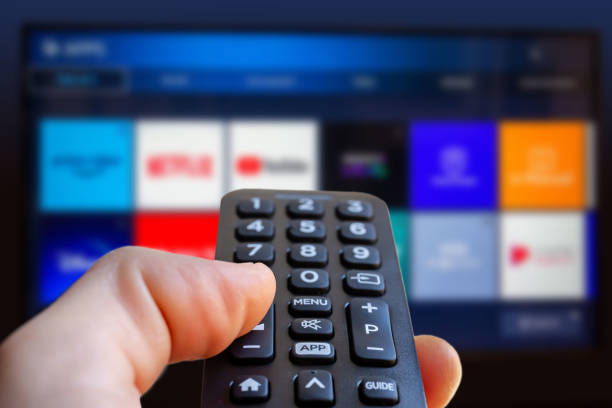Smart TV With Access to Most Channels for Endless Entertainment
Television has evolved dramatically over the years, transforming from basic broadcast receivers to sophisticated entertainment hubs. Smart TVs now dominate the market, offering unprecedented access to content through various streaming platforms, apps, and channels. For viewers seeking maximum entertainment options, finding a smart TV with access to most channels becomes essential for creating a comprehensive home entertainment system that meets diverse viewing preferences and eliminates the need for additional devices.

What Makes a Smart TV Different from Regular TVs?
Smart TVs fundamentally differ from traditional televisions by incorporating internet connectivity and computing features directly into the television set. Unlike conventional TVs that can only display content from external sources like cable boxes or DVD players, smart TVs function as standalone entertainment platforms. They feature operating systems similar to smartphones, allowing users to download apps, browse the web, stream content, and even control smart home devices in some cases. This connectivity transforms the viewing experience from passive channel surfing to active content exploration across numerous platforms and services.
The integration of streaming capabilities means viewers can access services like Netflix, Hulu, Amazon Prime Video, and Disney+ without requiring additional hardware. Many smart TVs also include voice control features, allowing users to search for content, adjust settings, or control playback using simple voice commands through built-in assistants like Google Assistant, Amazon Alexa, or the TV manufacturer’s proprietary system.
Which Smart TVs Offer the Most Streaming Channels?
When evaluating smart TVs based on channel access, the underlying operating system largely determines content availability. Several major operating systems dominate the smart TV landscape, each offering different channel ecosystems:
Roku TV models consistently rank among the best for channel selection, with access to over 5,000 streaming channels covering every major service and countless niche options. This platform-agnostic approach ensures users aren’t limited to certain ecosystems. Android TV (Google TV) devices provide excellent integration with Google services and access to thousands of apps through the Google Play Store, including virtually all major streaming platforms and many specialized content providers.
Samsung’s Tizen OS and LG’s webOS also offer comprehensive app selections covering major streaming services, though they typically feature fewer total channels than Roku or Android TV platforms. However, these manufacturers often secure exclusive partnerships with content providers that may make certain channels available only on their devices.
How Important is Hardware When Choosing a Smart TV?
While channel access is crucial, hardware specifications significantly impact the viewing experience. Resolution capabilities determine picture clarity, with 4K UHD now considered standard and 8K emerging as the premium option. However, resolution alone doesn’t guarantee quality—panel technology matters significantly. OLED displays deliver superior contrast with perfect blacks but typically cost more than LED/LCD options, which offer better brightness for well-lit rooms.
Processing power affects navigation speed and streaming performance. TVs with faster processors and more RAM provide smoother experiences when switching between apps or streaming high-definition content. Connection options also matter significantly—look for multiple HDMI ports supporting the latest standards (HDMI 2.1 for gaming or 8K content) and both wired and wireless internet connectivity for reliable streaming.
Audio quality is often overlooked but remains crucial for a complete entertainment experience. While many premium models feature advanced sound systems, most entry-level and mid-range TVs benefit from external soundbars or speakers for truly immersive sound.
Smart TV Prices and Affordable Options
Smart TV prices vary dramatically based on screen size, display technology, and brand reputation. Entry-level smart TVs with basic features start around $150-$250 for smaller sizes (32-43 inches), typically offering 1080p resolution and standard LED displays. Mid-range options ($300-$700) generally provide 4K resolution, improved processing, and better picture quality in sizes from 43-65 inches.
Premium smart TVs ($800-$3,000+) feature advanced display technologies like OLED or QLED, superior processing, enhanced gaming features, and larger screen sizes. These high-end models often include additional premium features like voice assistants, ambient modes, and superior sound systems.
| Brand/Model | Screen Size | Display Type | Operating System | Estimated Price Range |
|---|---|---|---|---|
| TCL 4-Series | 43”-55” | LED | Roku TV | $230-$380 |
| Hisense U6 Series | 50”-65” | QLED | Google TV | $350-$700 |
| Samsung Crystal UHD | 43”-85” | LED | Tizen | $280-$1,300 |
| LG NanoCell | 50”-75” | LED NanoCell | webOS | $450-$1,200 |
| Sony X80K | 43”-85” | LED | Google TV | $550-$1,700 |
| Samsung QN90B | 43”-85” | Neo QLED | Tizen | $1,200-$5,000 |
| LG C2 Series | 42”-83” | OLED | webOS | $900-$4,300 |
Prices, rates, or cost estimates mentioned in this article are based on the latest available information but may change over time. Independent research is advised before making financial decisions.
How to Access Additional Channels Beyond Built-in Options
While smart TVs provide extensive channel access through their native platforms, viewers can expand options further through several methods. Most smart TVs allow installation of third-party applications beyond those available in the official app store. This process (sometimes called “sideloading”) can add specialized content sources, though reliability may vary.
External streaming devices like Amazon Fire Stick, Apple TV, or additional Roku devices can supplement a smart TV’s capabilities, particularly for older models with limited app support. These devices connect via HDMI and provide their own interfaces and app ecosystems. Additionally, IPTV services offer subscription-based access to numerous live channels, though quality and legality vary significantly between providers.
For traditional broadcast content, many smart TVs include built-in tuners for accessing free over-the-air channels with an antenna. Combined with streaming options, this creates a comprehensive content ecosystem without monthly cable fees.
Making the Most of Your Smart TV’s Channel Ecosystem
Optimizing a smart TV’s entertainment potential requires understanding both the hardware capabilities and available content ecosystem. Creating personalized profiles for different household members helps tailor recommendations and maintain separate watchlists. Most streaming services offer this feature, making content discovery more efficient.
Taking advantage of universal search features can simplify finding specific shows or movies across multiple platforms. Rather than checking each app individually, many smart TV interfaces allow searching across all installed services simultaneously. Additionally, customizing the home screen layout places frequently used apps and channels in easily accessible positions, streamlining the viewing experience.
The smart TV experience continues evolving with manufacturers regularly providing software updates that add features and improve performance. Ensuring your TV receives these updates maintains optimal functionality and security while potentially adding new channel options as they become available.




